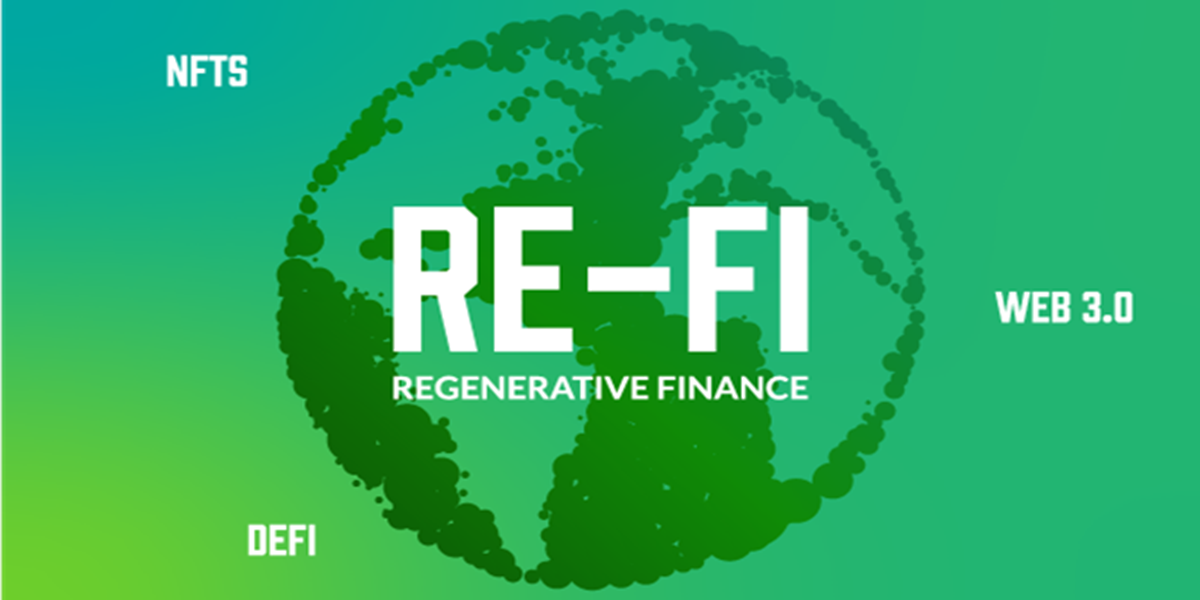Introduction
The 21st century has seen a growing recognition of the need to rethink how we interact with our planet and each other. Traditional economic models, with their focus on extraction, consumption, and short-term profit, have contributed to ecological degradation, widening inequalities, and social unrest. In response, a new approach is emerging—Regenerative Finance (ReFi). This framework aims to create financial systems that do not merely sustain but actively regenerate ecosystems and communities.
This article explores the transformative potential of regenerative finance, examining how it can reshape our economic landscape to be more equitable, resilient, and aligned with natural systems.
What Is Regenerative Finance?
ReFi is based on the idea that our financial systems should mimic the regenerative processes found in nature. In natural ecosystems, resources are continuously cycled, and waste from one process becomes fuel for another. This cyclical, regenerative model contrasts sharply with the linear, extractive nature of conventional finance, where resources are often depleted without consideration for the long-term consequences.
In regenerative finance, the goal is to invest in systems that generate more value than they consume—whether that value is social, environmental, or economic. This means prioritizing projects and businesses that restore ecosystems, empower communities, and create resilient, long-term economic systems.
Key Elements of Regenerative Finance
- Regenerative Economies: Unlike traditional economies that are based on growth at all costs, regenerative economies focus on thriving within the planet’s ecological limits. This involves shifting from an extractive mindset to one that values replenishment and restoration. Regenerative finance aims to support businesses and projects that contribute to the health of ecosystems and communities.
- Circular Finance: Inspired by the circular economy, regenerative finance emphasizes closing loops within financial systems. This can involve reinvesting profits into further regenerative projects, supporting businesses that minimize waste, or creating financial products that reward sustainable practices. Circular finance ensures that capital flows are used in ways that continuously benefit society and the environment.
- Community-Centric Approaches: Regenerative finance recognizes that economic systems should serve the communities they operate within. This means prioritizing local investments, supporting community-owned enterprises, and ensuring that financial gains are equitably distributed. By focusing on the needs and well-being of communities, regenerative finance helps build more resilient and self-sustaining local economies.
- Resilience Building: In a world facing increasing climate risks, financial systems must be designed to withstand shocks and stresses. Regenerative finance prioritizes resilience by investing in projects that enhance the adaptive capacity of communities and ecosystems. This could include funding renewable energy projects, supporting climate-resilient agriculture, or backing businesses that contribute to disaster preparedness and recovery.
- Ethical Stewardship: At the heart of regenerative finance is a commitment to ethical stewardship. This involves making financial decisions that consider the well-being of future generations and the planet. Ethical stewardship ensures that investments do not cause harm and instead contribute to the regeneration of natural and social systems.
Applications of Regenerative Finance in Action
The principles of regenerative finance are being applied across a variety of sectors, proving that it is not only a viable approach but also a necessary one. Here are some areas where regenerative finance is making an impact:
1. Regenerative Agriculture and Food Systems
Agriculture has a significant impact on the environment, from soil degradation to deforestation and greenhouse gas emissions. Regenerative agriculture offers a solution by focusing on farming practices that restore soil health, increase biodiversity, and sequester carbon. Regenerative finance supports this transition by funding projects that help farmers adopt sustainable practices, such as agroforestry, cover cropping, and rotational grazing.
In addition to benefiting the environment, regenerative agriculture also supports the economic well-being of farmers by reducing their reliance on expensive chemical inputs and enhancing their resilience to climate change. By investing in regenerative food systems, regenerative finance helps create a more sustainable and secure food supply.
2. Sustainable Infrastructure Development
Infrastructure plays a critical role in shaping how societies function and interact with the environment. Regenerative finance is increasingly being used to fund the development of sustainable infrastructure, such as green buildings, renewable energy systems, and public transportation networks.
These projects not only reduce environmental impact but also enhance the quality of life for residents by creating healthier, more livable communities. For example, green buildings that incorporate energy-efficient designs and materials can reduce energy consumption and lower greenhouse gas emissions while also providing comfortable, affordable housing.
3. Regenerative Tourism
Tourism is a significant driver of economic activity in many parts of the world, but it often comes at a high cost to the environment and local communities. Regenerative tourism aims to change that by promoting travel experiences that restore and enhance the places being visited, rather than exploiting them.
Regenerative finance can support this by investing in eco-tourism initiatives, sustainable accommodation options, and conservation projects that protect natural and cultural heritage. This approach ensures that tourism benefits both travelers and the destinations they visit, creating a more balanced and sustainable industry.
4. Climate Action and Carbon Sequestration
The fight against climate change is perhaps the most urgent challenge of our time, and regenerative finance is playing a crucial role in supporting climate action. One of the most promising areas of regenerative finance is carbon sequestration, which involves capturing and storing carbon dioxide from the atmosphere.
This can be achieved through various methods, such as reforestation, soil management, and technological innovations like direct air capture. Regenerative finance helps fund these initiatives, providing the capital needed to scale up carbon sequestration efforts and mitigate the impacts of climate change.
The Future of Regenerative Finance
As awareness of the limitations and harms of traditional financial systems grows, so too does the interest in regenerative finance. This approach represents a radical departure from the status quo, offering a more balanced and harmonious way to manage economic resources. But what does the future hold for regenerative finance, and how can it be scaled to meet global challenges?
- Policy and Regulation: Governments have a critical role to play in supporting the growth of regenerative finance. This could involve creating incentives for regenerative investments, implementing policies that discourage harmful financial practices, and ensuring that financial systems are aligned with sustainability goals. By setting clear standards and regulations, governments can help create an environment where regenerative finance can thrive.
- Education and Awareness: For regenerative finance to become mainstream, there needs to be a shift in how people think about money and value. This requires education and awareness campaigns that promote the principles of regenerative finance and highlight its benefits. Financial literacy programs, targeted at both consumers and investors, can help build a broader understanding of regenerative finance and encourage more people to participate in it.
- Innovation and Collaboration: The success of regenerative finance will depend on continued innovation and collaboration across sectors. This means developing new financial products and services that align with regenerative principles, such as green bonds, impact investments, and sustainability-linked loans. It also means fostering partnerships between investors, businesses, and communities to drive systemic change.
- Scaling Impact: As regenerative finance gains traction, the challenge will be to scale its impact to address global challenges. This will require mobilizing significant amounts of capital, building capacity in emerging markets, and ensuring that regenerative finance is accessible to all. By focusing on scalability, regenerative finance can help create a more sustainable and resilient global economy.
Conclusion
Regenerative finance is more than just a new financial trend; it is a fundamental shift in how we approach the relationship between economics, society, and the environment. By prioritizing regeneration over extraction, community over profit, and long-term resilience over short-term gains, regenerative finance offers a blueprint for a more just and sustainable world.
As the challenges of the 21st century continue to mount, the need for regenerative finance will only grow. By embracing this approach, we can build economies that thrive in harmony with nature, ensuring a prosperous future for all.




